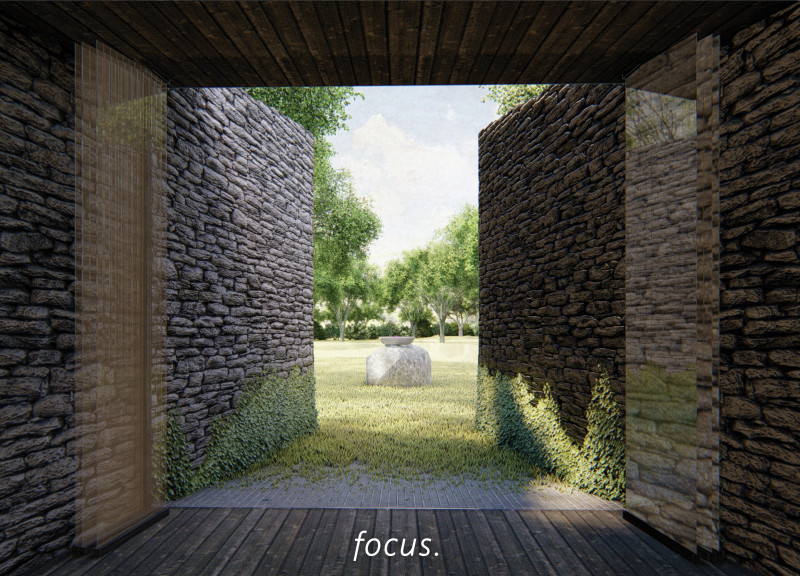5 key facts about this project
The meditation cabin integrates with its natural surroundings, situated in a serene area defined by rolling hills and lush forests. Serving as a space for reflection and mindfulness, it allows visitors to reconnect with nature. The design concept emphasizes a journey into tranquility, guiding individuals from the open landscape into the forest where the cabin offers a peaceful retreat.
Site Integration
The design takes careful consideration of the site's topography, creating a gradual transition for those approaching the cabin. Visitors experience a calming effect as the layout reduces sensory distractions. The structure rises from the ground, enhancing its connection to the earth and reinforcing its relationship with the environment.
Cultural Influence
The design draws inspiration from traditional Māori architecture, reflecting a deep respect for the land and its cultural significance. This influence is evident in the way the spaces are organized, blurring lines between indoor and outdoor areas. At the heart of the cabin, a large boulder serves as an altar, acting as a focal point for meditation and symbolizing tranquility.
Materiality
Construction materials focus on sustainability and local context. The cabin’s walls are made of local stone, and cobblestone flooring blends with the natural surroundings. Charred timber is also used, which not only extends the material’s lifespan but also limits environmental impact. This choice allows the structure to age naturally over time.
Climatic Considerations
The design responds to local climate conditions, utilizing permeable landscaping that enables water filtration and prevents erosion. The cabin’s orientation helps protect against the summer sun while ensuring that winter sunlight can reach the central altar. This arrangement creates a pleasant balance of light and warmth throughout the year, enhancing the user experience.
Wild native plants are welcomed both inside and outside the cabin, supporting local biodiversity. As vines naturally climb the stone walls, the structure becomes even more connected to its environment, reinforcing its role as a tranquil sanctuary.






















































